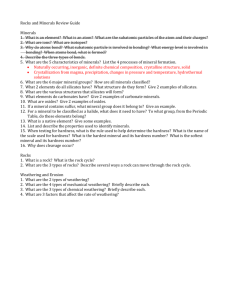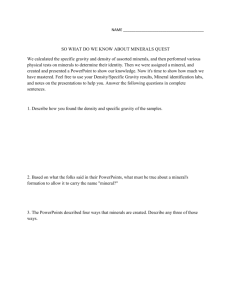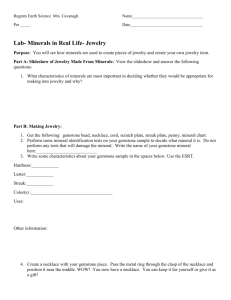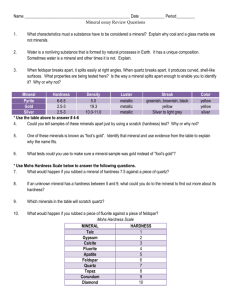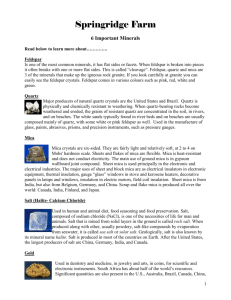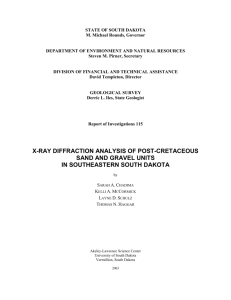Layered Earth Unit C1 Minerals Worksheet Key
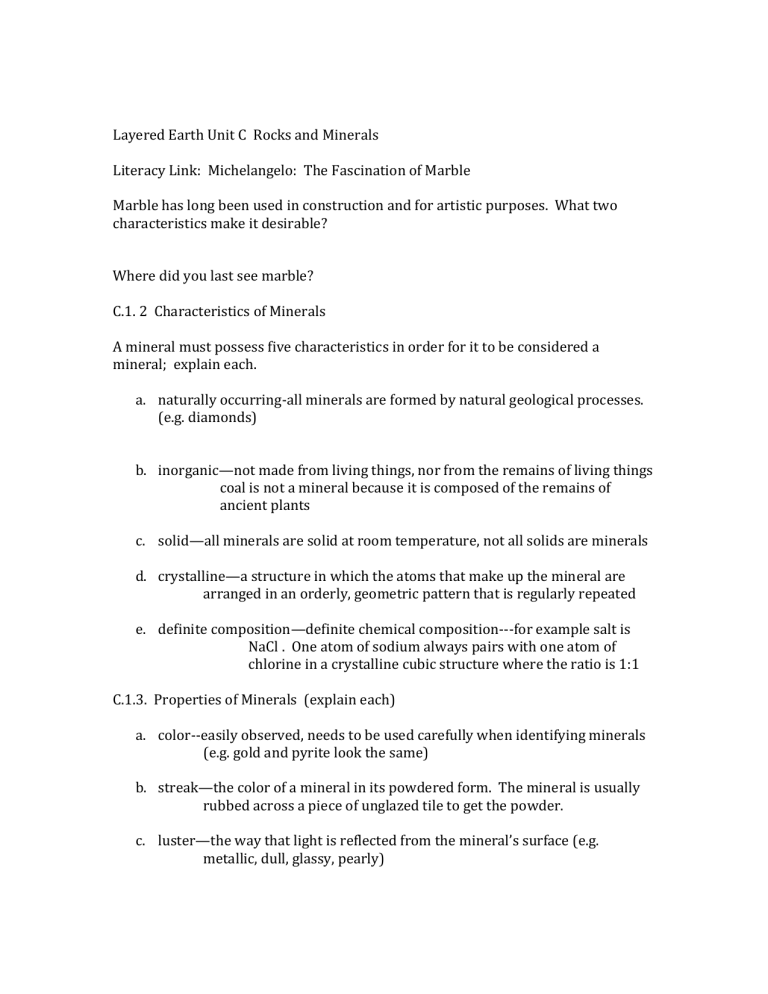
Layered Earth Unit C Rocks and Minerals
Literacy Link: Michelangelo: The Fascination of Marble
Marble has long been used in construction and for artistic purposes. What two characteristics make it desirable?
Where did you last see marble?
C.1. 2 Characteristics of Minerals
A mineral must possess five characteristics in order for it to be considered a mineral; explain each. a.
naturally occurring-all minerals are formed by natural geological processes.
(e.g. diamonds) b.
inorganic—not made from living things, nor from the remains of living things
coal is not a mineral because it is composed of the remains of
ancient plants c.
solid—all minerals are solid at room temperature, not all solids are minerals d.
crystalline—a structure in which the atoms that make up the mineral are arranged in an orderly, geometric pattern that is regularly repeated e.
definite composition—definite chemical composition---for example salt is
NaCl . One atom of sodium always pairs with one atom of chlorine in a crystalline cubic structure where the ratio is 1:1
C.1.3. Properties of Minerals (explain each) a.
color--easily observed, needs to be used carefully when identifying minerals
(e.g. gold and pyrite look the same) b.
streak—the color of a mineral in its powdered form. The mineral is usually rubbed across a piece of unglazed tile to get the powder. c.
luster—the way that light is reflected from the mineral’s surface (e.g. metallic, dull, glassy, pearly)
d.
cleavage—the ability of a mineral to break along smooth flat surfaces (e.g. mica) e.
fracture—the tendency of a mineral to break along irregular, uneven surfaces like a bone break f.
density—determined by dividing the objects mass by its volume. (is it gold?) g.
hardness—A measure of the ease with which the surface can be scratched.
Mohs Hardness Scale ---Scale of 1 (softest) to 10 (hardest)
MINERAL diamond
HARDNESS
10
HARDNESS of COMMON OBJECTS corundum topaz quartz feldspar
9
8
7
6 streak plate (7) steel file (6.5) apatite fluorite calcite gypsum
5
4
3
2 glass/knife blade (5.5) iron nail (4.5) copper penny (3.5) fingernail (2.5) talc 1
View a sample of Iceland Spar and explain its unusual property. double image can be seen through it
C.1.4
What is a Rock? a naturally occurring mixture of minerals- minerals are the building blocks of rocks
Explain the difference between a rock and a mineral.—all minerals are rocks, not all rocks are minerals
What minerals is granite usually a mixture of? feldspar, quartz, mica, hornblende
What are the six most common rock-forming minerals? quartz, feldspar, mica, pyroxene, amphibole, and olivine
What makes up 30% of the Earth’s continental crust? quartz (silicon and oxygen)





